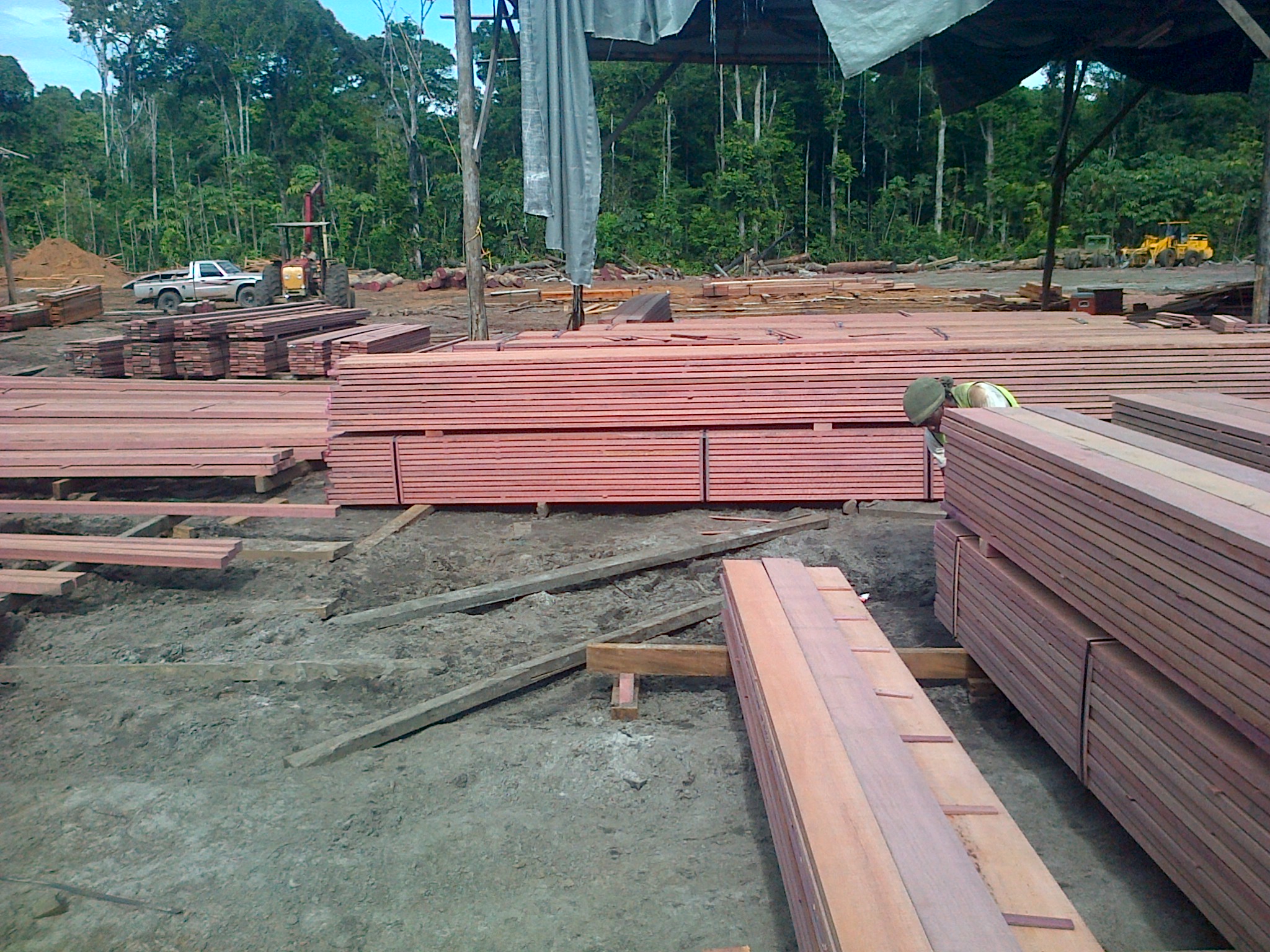Peltogyne spp
Common Names: Purpleheart,Amarante, Amaranth,Guarabú, Koroboreli, Morado, Nazareno, Palo morado, Pau roxo, Pelo morado, Purperhart, Saka, Sakavalli, Tananeo, Violetwood.
Environmental Profile
The environmental profile of this species within its natural habitat has not been officially assessed.
Distribution
The commercial name Purpleheart is reported to refer to timber produced by about 20 species, including P. porphyrocardia , which grow in Central America and tropical South America, from Mexico to southern Brazil. They are reported to be most common in the Amazon basin, and are also found in Colombia, Guyana, Surinam, and Venezuela.
Product Sources
It is not known at present whether some material from this species is available from sustainably managed, salvaged, recycled, or other environmentally responsible sources.
The International Tropical Timber Organization (ITTO) reports that timber production from this species is regular. The material is exported at a low but regular rate.
Supplies are reported to be ample, but the wood is fairly expensive. It is reported to cost more than mahogany but less than teak. Although it has not found wide demand, Purpleheart is reported to be available on the US market in both the lumber and veneer forms.
Tree Data
Mature Purpleheart trees are usually tall and attain a height of about 100 to 150 feet (30 to 45 m), and a diameter of up to 48 inches (120 cm), usually between 18 and 36 inches (45 and 90 cm).
Sapwood Color
The sapwood is creamy white or off-white in color, and is very distinct from the heartwood. The color has also been described as pinkish cinnamon with light brown streaks, and is usually about 2 to 4 inches (5 to 10 cm) wide.
Heartwood Color
The heartwood is initially dull brown, but it rapidly changes to a bright, vibrant purple. Prolonged exposure darkens the wood to a dark-purplish brown or dark brown, but the original color can be restored by recutting the wood. Color variation between boards is reported to be moderate to high. Presence of minerals in some boards may cause uneven coloration and steaming is reported to affect the color. Peltogyne timbers are reported to vary widely in color between, and probably within, species.
Light & Air-Induced Changes
Treatment against the effects of ultra-violet rays has been suggested to maintain the original color of the wood. A treatment with Armorall, the car finish product, under lacquer is reported to hold the color well.
Grain
The grain is typically straight, sometimes wavy, roey, or irregular.
Texture
The wood has a medium to fine texture.
Luster
The wood exhibits a medium to high luster.
Odor
There is no characteristic odor or taste.
Ease of Drying
Drying properties are reported to vary. Difficulty in air-drying varies from easy to moderately difficult, and drying rate ranges from slow to fairly rapid. Moisture extraction from center of thicker stock is reported to be rather difficult.
Drying Defects
Degrade from warping and splitting is reported to be slight.
Kiln Schedules
T6 – D2 (4/4); T3 – D1 (8/4) US
Schedule E – United Kingdom
Movement in Service
The wood is reported to be dimensionally stable, and shows only small movement after manufacture.
T/R Ratio
2.00
This indicator is more meaningful if it is used together with other drying information and actual shrinkage data in the tangential and radial directions. (Refer to the Numerical Values window).
Natural Durability
Peltogyne heartwood is rated as highly resistant to attack by decay fungi, very resistant to dry-wood termite attack, and slightly resistant to attack by marine borers. The wood is also reported to be resistant to chemicals such as acids.
Resistance to Impregnation
The heartwood is reported to be extremely resistant to impregnation but the sapwood is treatable.
Exudates
Working the wood with dull cutting tools may cause gum exudation.
Blunting Effect
Cutting tools may be gummed up if they are not very sharp. Blunting is rated as moderate to severe.
Cutting Resistance
Peltogyne timbers are reported to be moderately difficult to saw. Tools usually require frequent sharpening. Slow feed rates and specially tipped cutters are suggested.
Planing
Peltogyne timbers are reported to be moderately difficult to work in most machining operations including planing, turning, boring, and moulding. They respond rather poorly to ordinary tools, and working with dull cutters may cause the wood to heat up and exude resin which can considerably increase machining difficulty. Slower feed rates and specially tipped cutters, or sharp, high-speed steel knives are suggested. A reduced cutting angle of 15 degrees has also been recommended, especially when planing and moulding material with interlocked or wavy grain.
Gluing
The material is reported to be easy to glue.
Nailing
The wood requires to be pre-bored, but nail-holding capabilities are reported to be good.
Sanding
The material is reported to be fairly difficult to sand.
Polishing
Polishing properties are reported to be rather good.
Staining
The material is reported to take finishes rather well. There is a tendency for some finishes to bleed, but reports indicate that water-based finishes hold color better. The use of spirit finishes are reported to remove the purple coloring in the wood.
Steam Bending
The wood steam bends fairly well.
Response to Hand Tools
Response to hand tools is reported to be only fair.
Strength Properties
The strength properties of timber produced by species in the genus are reported to be between those of European beech (Fagus sylvatica ) and Greenheart (Ocotea rodiaei ). Bending strength in the air-dry condition is very high, and crushing strength is exceptionally high. It is hard, and does not mar or dent easily. It is also very heavy and very dense.


